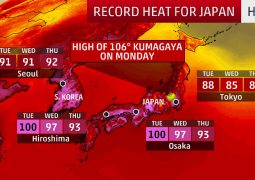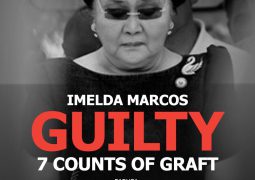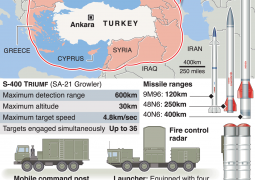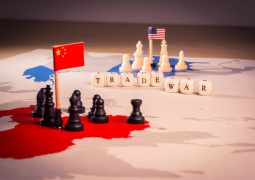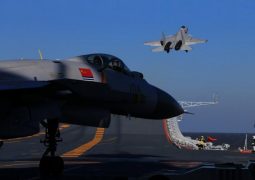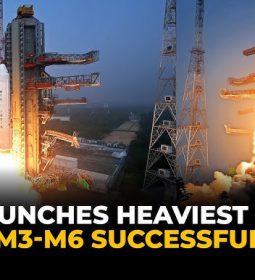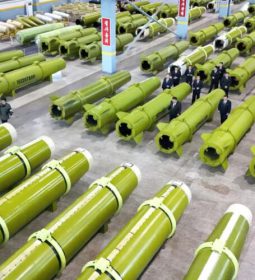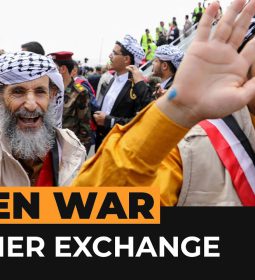Micromanager-in-Chief: Narendra Modi Upends How India Is Run
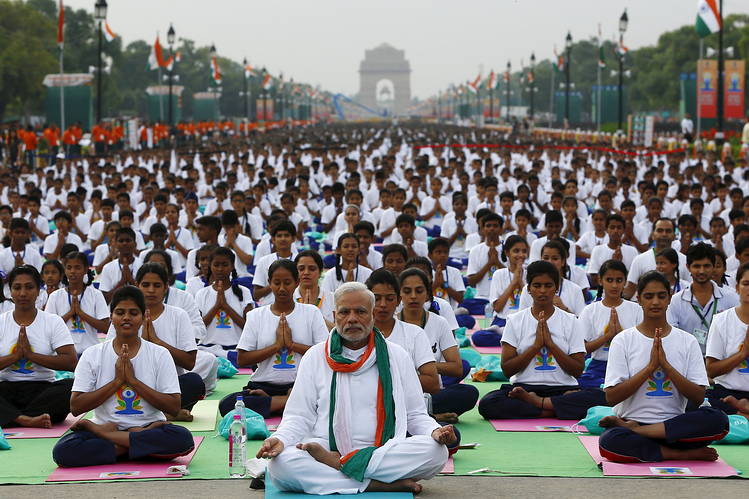
NEW DELHI—Indian Prime Minister Narendra Modi stunned the country in November when he canceled nearly 90% of its paper money. For weeks, tens of millions of people lined up daily at banks to redeem old bills. Sales at cash-dependent businesses collapsed. The growth of Asia’s third-largest economy slowed to a two-year low.
It was a quintessential move by Mr. Modi, planned in secret with a handful of close advisers. He announced it to the country only hours before it went into effect. His own cabinet ministers knew just 20 minutes before the announcement.
Backed by a rare majority government, Mr. Modi, 66 years old, has emerged as India’s most powerful leader in a generation. He is changing the way the country is governed, keeping cabinet ministers on a tight leash and micromanaging the stubbornly independent bureaucracy.
After starting his days with yoga at 5:30 a.m., the prime minister dominates the crafting of his administration’s marquee initiatives, even coming up with their names. Four months after the currency swap, Mr. Modi hasn’t budged from his argument that its benefits—less tax evasion and more digital payments—will outweigh the pain.
His forceful leadership is facing its first major test. Local legislative elections in several Indian states pit the prime minister’s Bharatiya Janata Party, or BJP, against rivals who want to check his power. Results of the voting, which has been taking place over the past five weeks, are due Saturday.
A victory, particularly in India’s most-populous state of Uttar Pradesh, would give the BJP more strength in Parliament and momentum for a widely expected re-election bid by Mr. Modi in 2019. If his party loses, opponents will be emboldened to block more of his legislative agenda.
Exit polls released Thursday suggest a swing to the BJP in Uttar Pradesh and strong showings by the party in other states.
For decades before Mr. Modi took office, India’s federal governments were fragile coalitions of feuding rival parties. Unstable political alliances and bureaucratic resistance bedeviled attempts to transform and modernize the world’s largest democracy. Mr. Modi’s predecessor as prime minister, Manmohan Singh, was nearly ousted for trying to sign a nuclear deal with the U.S. in 2008. It eventually went through.
In 2014, Mr. Modi’s political party became the first in three decades to win a majority in Parliament, campaigning on a promise to restore the prime minister’s authority.
“He has full control over his party and government,” said Eswaran Sridharan, academic director and chief executive of the University of Pennsylvania’s Institute for the Advanced Study of India in New Delhi. “No prime minister has had so much power since the 1980s.”
Critics ranging from human-rights groups to student unions have accused Mr. Modi’s party of propping up his popularity by stirring sectarian resentments and Hindu nationalism. His government has denied the accusation.
While Mr. Modi has attracted more foreign investment and pushed through a long-delayed tax overhaul, domestic private investment remains stagnant. Legions of young Indians can’t find decent jobs.
He established his reputation as a no-nonsense leader while chief minister for more than a decade in the western state of Gujarat. His tenure was marred by religious riots in 2002. Hundreds of people were killed, most of them Muslims.
After becoming prime minister, Mr. Modi passed over BJP elders for cabinet posts and abolished more than two dozen panels of ministers. Mr. Modi also changed how senior bureaucrats are appointed so ministers have less say in filling top jobs. Those moves curbed the influence of the cabinet.
One longtime Indian diplomat said Mr. Modi doesn’t need to keep “looking over his shoulder to make sure his actions aren’t angering his coalition partners.”
To get tough on India’s bureaucrats, Mr. Modi has ordered them to check in and out of work using fingerprint scanners. Attendance records covering 215,000 employees in more than 600 agencies are available online.
An aide to Mr. Modi recalls hearing him listen for 12 minutes to a senior civil servant discuss how well the department handled public complaints.
The prime minister then asked bluntly: “May I tell you something?” He opened a file and read aloud what he saw as an intolerably high number of unresolved cases.
Growth Battles Bureaucracy
Under Narendra Modi, India’s economic growth has remained among the strongest in the world, and foreign investment has increased. But many important expansion projects are mired in bureaucracy.
Economic growth
GDP change from previous year
Inflow of foreign direct investment
Billions of dollars
Stalled investment projects
Share of investments under implementation



Mr. Modi prods federal and state officials monthly about infrastructure projects, tuberculosis control and other initiatives. When the top bureaucrat in Bihar state couldn’t explain why more drivers weren’t using a recently built road, the prime minister pointed to a satellite photo showing that construction of a small bridge wasn’t finished, snarling traffic, according to someone who was there.
When government officials make the mistake of being unprepared, Mr. Modi isn’t reluctant to say “You are wasting my time,” according to another aide.
Each of Mr. Modi’s lieutenants is responsible for overseeing a handful of different ministries and managing their civil servants. The prime minister recently set up an online dashboard called Drishti—Hindi for “vision”—so Mr. Modi and his advisers can monitor the work being done by federal departments.
Some senior federal employees said Mr. Modi’s office directly supervises so many government activities that his lieutenants are stretched thin. The prime minister’s office denies that.
Even his staff is sometimes caught off-guard by his decisions. On Christmas Day in 2015, he called Pakistan’s prime minister, Nawaz Sharif, to wish him a happy birthday. Mr. Modi then decided on the spur of the moment to fly to the Pakistani city of Lahore to celebrate in person with Mr. Sharif.
Mr. Modi’s visit to Pakistan was the first by an Indian prime minister in more than a decade. A week later, militants from Pakistan attacked an Indian base near the border, killing seven soldiers. Additional strikes and counterstrikes have halted rapprochement entirely.
“It’s command and control,” said Jairam Ramesh, a former minister in the opposition Congress party, of Mr. Modi’s relationship with his cabinet. “You don’t have alternative points of view. You don’t have discussion.”
The move in November to replace the largest-denomination bank notes was Mr. Modi’s boldest and riskiest. After taking office, his administration tried to clamp down on illicit or untaxed wealth that Indians hold in cash or stash offshore. The results had been middling. Mr. Modi wanted to get tougher.
A team of about 10 officials from the prime minister’s office, finance ministry and central bank began brainstorming in February 2016. They kept no minutes of their meetings, according to several members of the team. The prime minister insisted on secrecy.
Without revealing their intentions, the officials met with digital-wallet and credit-card companies to discuss the obstacles in India to cashless payments. The team hired a nonprofit group to survey the cash habits of rural households in several Indian states.
The officials were anxious, but Mr. Modi assured them India would accept difficult policies from leaders if convinced they were worthwhile.
According to an official who was there, the prime minister recalled a re-election campaign in Gujarat when he refused to match another party’s promise to make electricity free. Mr. Modi pledged only to make the power supply more reliable and was re-elected.
By April, the prime minister had made up his mind about the cash plan, according to members of his team. All 500- ($7.50) and 1,000-rupee ($15) bills, worth about $230 billion combined, would be voided overnight.
“I will not discuss this with hundreds of people,” Mr. Modi said, according to a senior official who heard the comment. “I am OK talking to a select few.”
Mr. Modi signed off on every detail. Indians would get 50 days to redeem their old cash at banks and post offices. Hospitals and gas stations could continue accepting canceled bills for a period of time. Old money would be replaced with newly designed 500- and 2,000-rupee notes.
Officials warned the prime minister about the potential for public backlash and even rioting, the senior official said. Mr. Modi told them to focus on operational details and let him wrestle with the political risks.
Late in the process, Mr. Modi asked that the new rupee notes be printed with the name of his “Clean India” public-sanitation drive. He also wanted the new money to show off the campaign’s logo: a drawing of Mohandas Gandhi’s round eyeglasses.
The prime minister wasn’t deterred when some officials in the finance ministry and central bank felt they needed more time, according to one person involved in the process. On Nov. 8, Mr. Modi told his cabinet ministers about the plan at about 7:40 p.m. A prerecorded television address went on the air at 8 p.m.
During the chaotic aftermath, Mr. Modi praised what he called the sacrifices of Indian citizens for the sake of the “historic rite of purification.”
One snag: The new rupee bills were designed to be smaller in size than the ones they replaced, so that more bills could be printed with the same amount of paper and the cash supply could be replenished quickly.
But all 200,000 automated teller machines in India had to be manually configured so they could dispense the new money. The process ended up taking weeks, slowing the rollout of new cash.
Shekhar Gupta, a political analyst in New Delhi, said the cash exchange shows what can go wrong when “one man comes up with the ideas and everybody else just implements.”
Mr. Modi’s steel minister, Chaudhary Birender Singh, said there is no doubt in the administration about who is in charge. “As the saying goes, a prince should be both loved and feared,” he said.
- Previous BN leaders slam opposition for spreading lies, inciting hatred against gov’t
- Next Austria stops four Turkish political meetings as row spreads



